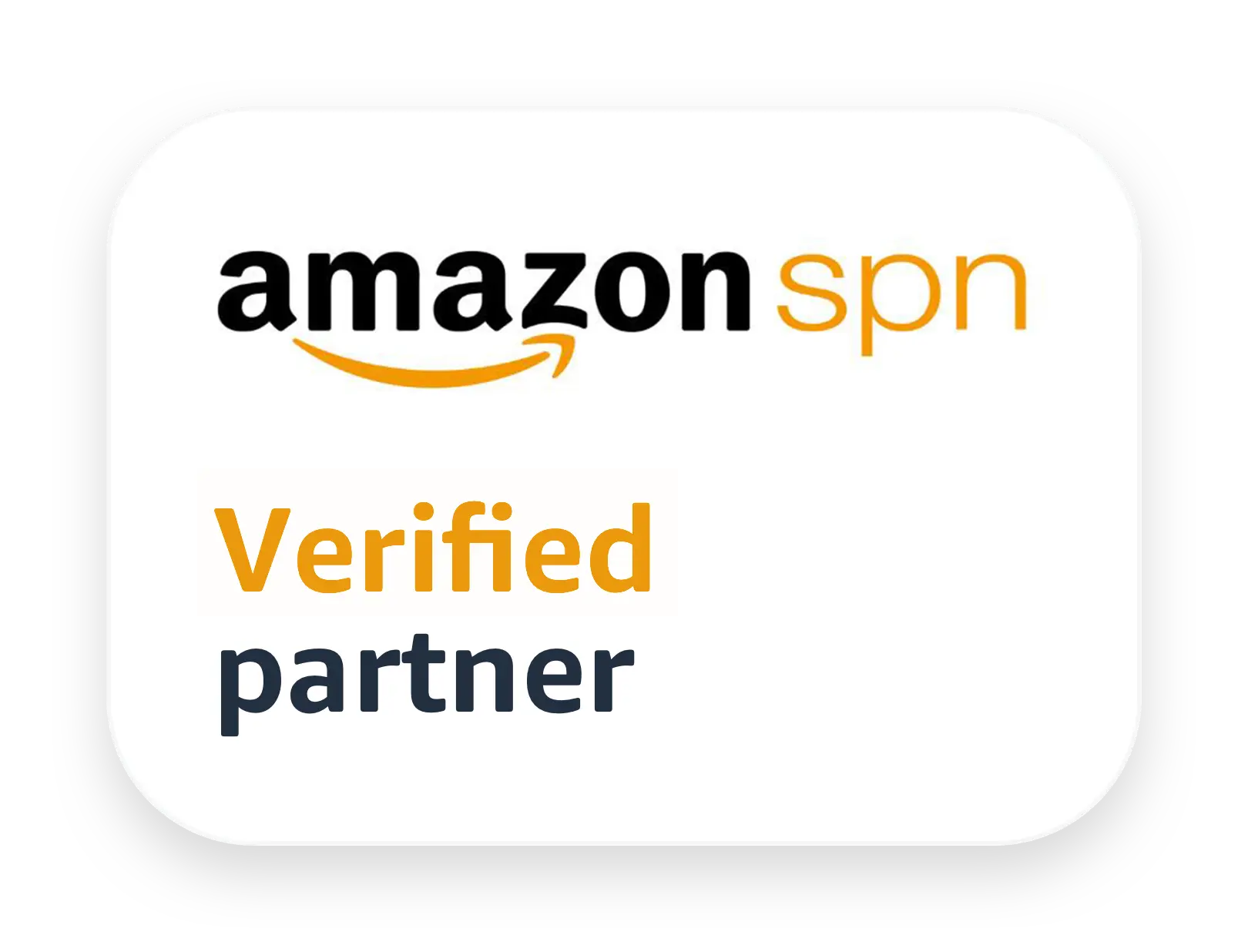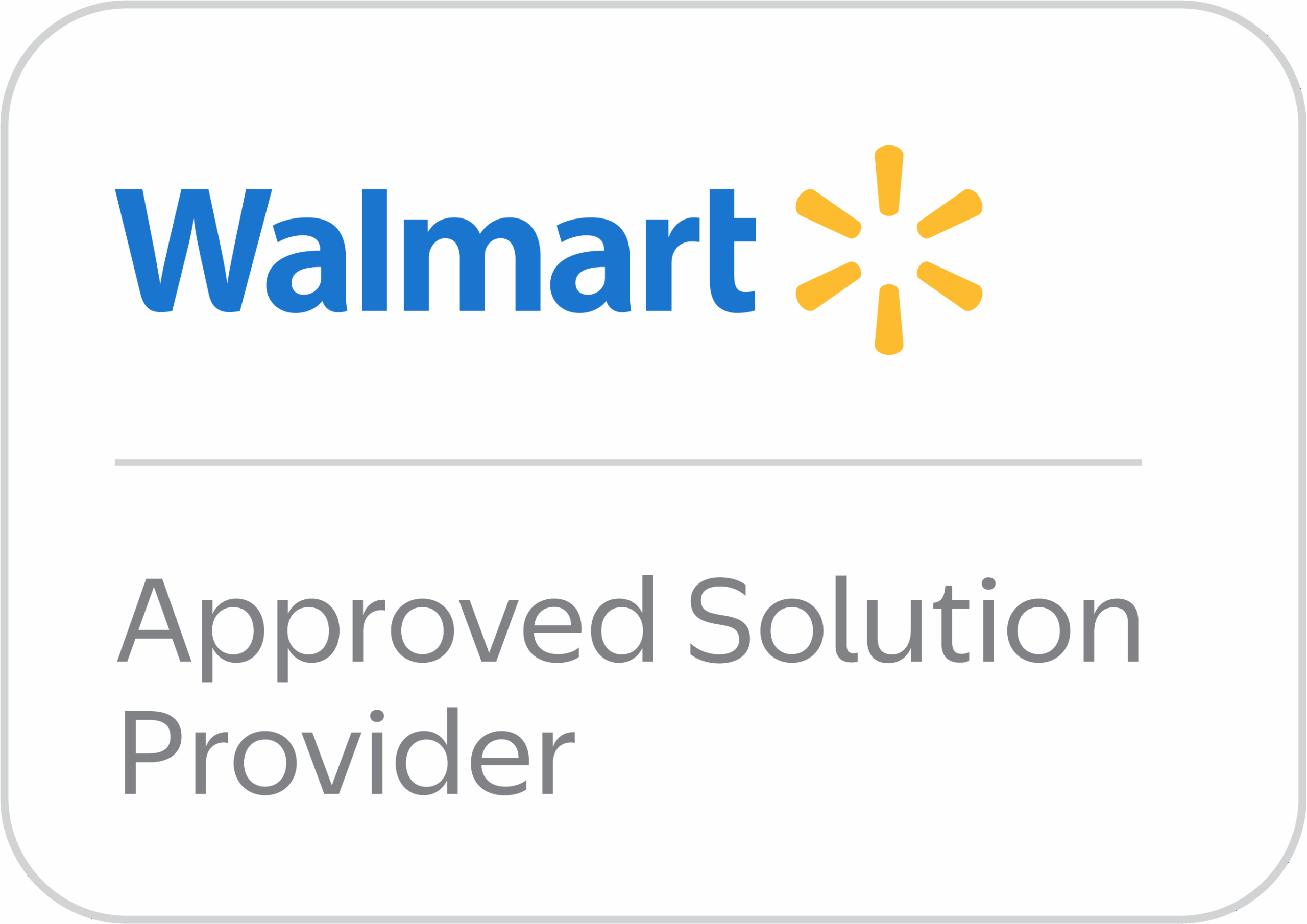If you’re selling children’s products in the U.S.—whether on Amazon, Shopify, or any other platform—you need to know the Consumer Product Safety Improvement Act (CPSIA). Passed in 2008 and fully enforced since August 14, 2009, CPSIA was designed to make children’s products safer by regulating lead content, phthalates, flammability, and mechanical hazards.
But the law does more than just regulate product safety. It also mandates something that many sellers overlook until it’s too late: tracking labels.
These small pieces of information can make or break your product listing. Amazon treats CPSIA compliance seriously—and so should you.
What Is a CPSIA Tracking Label?
At its core, a CPSIA tracking label is a permanent identifier on a children’s product and its packaging. Its job? To ensure traceability.
Let’s say there’s a recall. The tracking label allows you (and the authorities) to quickly identify which batch was affected, when it was made, and who made it. That way, only the unsafe batch is pulled, not your entire inventory.
The label isn’t just a formality. It’s mandatory for all children’s products made or imported after August 14, 2009, and sold in the U.S.
Why Tracking Labels Are Not Optional
Amazon requires it.
CPSC enforces it.
You’re liable, not your supplier.
As an Amazon seller, you’re considered the importer of record if you’re bringing products from overseas. That makes you responsible for ensuring each product is labeled correctly, even if your supplier is the one doing the printing.
Failure to comply can lead to:
- Amazon delisting or suspensions
- Customs seizures
- Civil penalties—up to $100,000 per violation
- Brand-damaging recalls
- Fines totaling $15 million for multiple infractions
ZonHack clients get proactive help: from label creation to factory communication, every compliance step is handled to prevent surprise penalties and protect your listing.
What Products Require CPSIA Tracking Labels?
Any product designed or marketed for children 12 and under must have a CPSIA-compliant tracking label. That includes:
- Toys and playthings
- Children’s clothing
- Art and school supplies
- Baby gear (carriers, bibs, high chairs)
- Books, puzzles, educational tools
- Sleepwear and bedding
- Cups, utensils, and food containers
It’s not just what the product is, but how it’s marketed.
For example, a simple cotton blanket might seem like a generic product. But if it’s sold with cartoon prints, pastel colors, or packaged with phrases like “perfect for toddlers,” then it’s subject to CPSIA.
What matters is how a typical consumer would perceive the product.
What Must Be Included in a CPSIA Tracking Label?
The Consumer Product Safety Commission (CPSC) outlines what each tracking label must include. Here’s what’s required:
- Manufacturer or importer’s name
- Location of production (city and state, or foreign equivalent)
- Date of production (or date range)
- Batch or run number
- Specific product identifier or materials used
- U.S. contact info (address and phone number)
The label must be understandable to both the seller and the end user. In other words, it should be easy for a parent—or a regulator—to figure out if their product is part of a problematic batch.
QR codes, serial systems, and websites are acceptable ways to encode information—as long as they’re clear and accessible.
Physical & Design Requirements for CPSIA Labels
It’s not just what’s on the label—it’s how it’s applied that matters.
Permanence
The label must last for the entire useful life of the product. That rules out stickers that peel off or ink that smudges with wear.
What works:
- Direct printing
- Sewn-in fabric labels
- Permanent adhesive with protective coating
What doesn’t:
- Paper stickers
- Labels that fade, rub off, or detach easily
Placement
Ideally, both the product and the packaging should carry the label.
But what if that’s not practical?
- For tiny items (like earrings or toy soldiers), the packaging alone may suffice.
- If the label is visible through transparent packaging, you may not need a second label on the outside.
- For bundled items (like a toy set in a single box), labeling the main unit may be acceptable.
Legibility
While there’s no mandated font or format, the label must be:
- Easy to read
- Logically structured
- Visible to the user (not hidden inside seams or underneath items)
You can use batch codes, dates, or factory identifiers—as long as the information can be interpreted by you and, if needed, a consumer or regulator.
Creating, Applying & Managing CPSIA Labels
Creating a compliant label isn’t just a design task—it’s part of your legal obligation. And it starts with getting the label design right.
Designing the Label
Use vector formats like .AI or .EPS. These maintain quality at any size and ensure crisp printing.
Design tools like Adobe Illustrator or Photoshop work well. Or better yet, work with a designer who understands compliance labeling, not just aesthetics.
The label must match your:
- Product size and shape
- Packaging format
- Material type and color constraints
ZonHack can provide pre-approved templates tailored to your product category, ready to send to your supplier.
Working with Suppliers
This is where many sellers slip.
Your supplier won’t create a compliant label for you. It’s not their job—and they likely don’t understand U.S. law.
You need to send them:
- The final label file
- Print specifications (position, size, color)
- Production batch info (for each manufacturing run)
Make sure you confirm their ability to print durable labels during the sample or trial production phase.
Don’t wait until mass production.
One Label per Production Run
Every production batch must have a unique label.
Why? Because it’s what enables batch-specific recalls. If something goes wrong, you don’t want your entire inventory pulled. Just the affected lot.
A good label code format looks like this:
TRK-ABCD-0425
Where:
- ABCD = SKU
- 04 = April
- 25 = Year 2025
ZonHack sets up batch-level tracking with clear naming logic—so you never lose traceability.
Pre-Shipment Verification
This step is critical.
Every shipment must be inspected before it leaves the factory to ensure:
- Labels are present
- Labels are correct
- Labels match the production run
Once your goods ship, it’s too late to fix labeling errors.
ZonHack ensures label verification is built into your final Quality Control (QC) inspection—avoiding costly rework or non-compliance.
Cost Considerations
Let’s talk budget:
| Item | Estimated Cost |
| Label Design | $50–$150 per template |
| Printing Per Unit | Negligible (fractions of a cent) |
| Compliance Mistake Cost | Can exceed $10,000+ if Amazon delists or issues a recall |
Skipping the label may save a few cents—but the cost of non-compliance can kill a listing and damage your brand permanently.
ZonHack handles all of this for you, including final file prep, supplier instructions, and label checks. It’s part of our done-for-you Amazon compliance stack.
Physical & Design Requirements for CPSIA Labels
CPSIA tracking labels are more than just a formality. They’re a critical part of product safety, recall management, and traceability—especially when selling through platforms like Amazon.
Permanence Is Non-Negotiable
One of the most overlooked aspects of the CPSIA label is durability. A compliant label must last for the entire useful life of the product. That means:
- No paper stickers that peel off after a few days.
- No temporary ink that fades after washing.
- No adhesive labels that detach from fabric or plastic surfaces.
If the product is likely to be handled, washed, chewed on, or thrown across the room (as kids often do), the label has to survive all of that. Direct printing on the product or using heat transfers or permanent sew-in tags is often the best route.
Where to Place the Label
CPSIA mandates labeling on both the product and the packaging, if it’s practical to do so. For instance:
- A toy car should have the label printed on its underside and also on the retail box.
- A baby onesie should have a printed tag sewn in, and the polybag or branded box should also be labeled.
There are limited exceptions. For very small items like marbles or barrettes, labeling the product may be impractical. In those cases, labeling the primary packaging is acceptable.
If the product is visible through clear packaging (e.g., blister packs), a label on the item alone may suffice—so long as it’s easily seen by the consumer.
Readable and Understandable by Humans
There’s no specific font or size required, but the label must be legible and logically formatted. It should be clear to:
- The consumer (in case of recalls)
- U.S. regulators (for compliance checks)
- Amazon (during listing verifications)
Barcodes, serial numbers, or QR codes can be used, but only in addition to readable human text. If your label relies on a coded system (e.g., a batch number), it must be decipherable through internal documentation—ideally, maintained and accessible in the event of an issue.
Label Formats Are Flexible—But Not Vague
There’s no one-size-fits-all layout. You can use alphanumeric codes, symbols, batch date formats, or even embedded links via QR codes. But at the core, every tracking label must answer:
- Who made it?
- Where and when was it made?
- What batch was it part of?
- How can I reach someone if there’s a problem?
If you miss any of these, you’re out of compliance.
Creating, Applying & Managing CPSIA Labels
Designing and managing CPSIA labels isn’t just a creative task—it’s a compliance-critical one. A good-looking label that fails to include batch info or production date won’t protect you from enforcement.
Start With a Proper Design File
The design process should begin early—before your product goes into production. Use professional tools like Adobe Illustrator (.AI) or vector-based software to ensure scalability and clarity.
A label must match:
- Product size and surface material
- Packaging format
- Color printing capabilities
- Durability needs (e.g., waterproof ink, heat transfer)
Design fees can range from $50 to $150 per template when outsourced to a designer familiar with CPSIA standards. This is a one-time cost that can save you from tens of thousands in penalties later.
Coordinating With Overseas Suppliers
This is where many Amazon sellers go wrong.
Even if your supplier says they’ve sold to U.S. companies before, do not assume they understand CPSIA labeling. You must:
- Provide the final label artwork file
- Give detailed printing instructions (size, placement, color codes)
- Communicate the production run number and date info for each batch
Don’t wait until the production is finished to check if they applied the label correctly. Confirm labeling capabilities during your sample or pre-production phase.
ZonHack clients receive supplier instruction templates and pre-shipment verification tools to make this step foolproof.
One Label Per Production Run
Each batch of goods must have a unique label—even if the product is identical.
This is because if a safety issue is discovered later, the specific batch must be traceable. A generic or reused tracking label doesn’t help anyone in a recall scenario.
Use a structured system like:
TRK-ABCD-0425
Where:
- ABCD is your internal SKU.
- 0425 means April 2025.
- The prefix TRK is your internal indicator for a tracking label.
Keep a log of each label used per batch. You’ll need it if Amazon or the CPSC asks for documentation.
Final Inspection & Quality Assurance
Before the products ship out, labels must be inspected as part of your final quality control checklist. If labels are missing or incorrectly formatted:
- You cannot add them after goods have left the factory.
- You risk customs rejection, Amazon removal, or product recalls.
Label checks should be part of your pre-shipment inspection protocol—not something discovered in your Amazon warehouse.
ZonHack includes label checks as part of its Amazon-ready inspection services, so clients never face nasty surprises after import.
Complex Scenarios: Special Labeling Considerations
The world isn’t perfect, and neither is supply chain labeling. Some product types raise practical challenges—here’s how to navigate them.
Products With Multiple Parts or Units
Think: puzzle sets, shoe pairs, or toy toolkits.
You don’t need to label every individual item if they are used as one functional unit. But at minimum, one part or the packaging must carry the full tracking label.
For example, a puzzle with 40 pieces can have the tracking label printed on:
- The box exterior, or
- A guide sheet included inside
…as long as consumers can access it if needed.
Small Products
When the product is too small to hold a full tracking label (e.g., rings, beads), you’re allowed to:
- Label the retail packaging instead
- Include traceability details on a hangtag, insert, or even through a QR code linking to a batch-specific info page
No Packaging Products
If your product ships naked (e.g., loose in a polybag or in bulk), then the product itself must be labeled—unless truly impossible.
For soft goods, sewn-in labels are ideal. For plastics or wood, consider heat stamping or laser engraving.
Dropshipping, Amazon FBA, and 3PLs
If you’re shipping to Amazon FBA or using a third-party logistics provider, labels must be present before the inventory is sent in.
Amazon will not fix your compliance issues for you.
ZonHack supports sellers by preparing FBA-ready, fully labeled inventory—including photo evidence of compliant labels for peace of mind.
Final Takeaways & ZonHack Compliance Support
CPSIA tracking labels are not optional. They’re a legal requirement for all children’s products sold in the U.S., whether you’re a solo Amazon seller or a growing DTC brand.
The consequences of ignoring this are massive:
- Product seizure at U.S. Customs
- Listing suspension or removal by Amazon
- Civil penalties up to $100,000 per violation
- Brand trust lost during recalls or bad PR
You can’t rely on your supplier to get it right. It’s your responsibility.
ZonHack Handles CPSIA Compliance, So You Don’t Have To
If your products fall under CPSIA—and you’re importing, listing, or scaling them on Amazon—ZonHack can manage every step of compliance for you.
Here’s how we support sellers:
- Determine whether your product falls under CPSIA
- Design custom tracking labels with batch-based formats
- Provide supplier-ready instructions
- Inspect and verify labels before shipment
- Supply photos, label files, and reports for Amazon documentation requests
Book your Free CPSIA Compliance Assessment
Visit ZonHack.com and secure your listing from compliance risks.
Frequently Asked Questions
Do private label Amazon sellers need CPSIA tracking labels?
Yes—if you sell children’s products (12 or under), you must include compliant tracking labels regardless of brand or supplier origin.
Is CPSIA labeling needed if the product is made in the U.S.?
Yes. The law applies to both domestic and imported children’s products.
Can I just put a barcode instead of a label?
No. Barcodes alone do not meet CPSIA label requirements. You must include manufacturer/importer info, date, batch, and contact.
Will Amazon check my CPSIA compliance?
Yes. Amazon may request tracking label images, CPCs, or lab reports at any time—especially if your product is flagged by customers or regulators.



